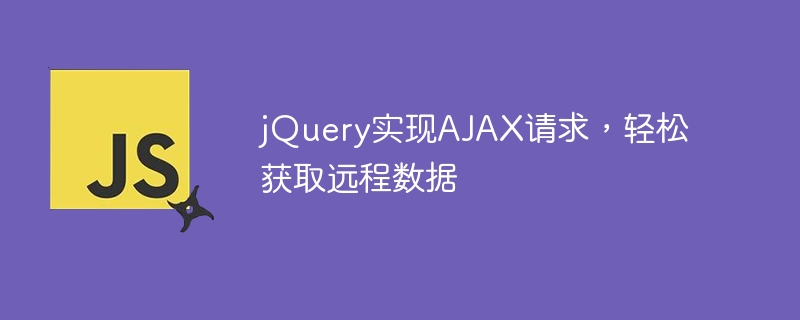

jQuery is a popular JavaScript library that is widely used in web development. The AJAX function is an important function commonly used by developers. Remote data can be easily obtained through AJAX requests and dynamic loading of data can be achieved without refreshing the page.
1. Introduce the jQuery library
Before using jQuery to implement AJAX requests, you first need to introduce the jQuery library into the HTML document. The latest version of jQuery can be introduced through the CDN address. The code is as follows:
<script src="https://code.jquery.com/jquery-3.6.0.min.js"></script>
2. Initiate an AJAX request
The following is a specific code example to demonstrate how to use it. jQuery initiates an AJAX request, obtains remote data and displays the data on the page.
jQuery AJAX 示例
<script src="https://code.jquery.com/jquery-3.6.0.min.js"></script>
远程数据获取示例
<script>
$(document).ready(function() {
$("#getDataBtn").click(function() {
$.ajax({
url: "https://api.example.com/data",
method: "GET",
success: function(data) {
$("#dataContainer").html("<p>" + data + "</p>");
},
error: function(xhr, status, error) {
console.log("出现错误:" + error);
}
});
});
});
</script>
In the above example, when the user clicks the button, an AJAX GET request will be initiated to the specified URL (here is the remote data address of the example). If the request is successful, the returned data will be displayed on the page; if the request fails, an error message will be output in the console.
Through the above code examples, we can see the simplicity and convenience of using jQuery to implement AJAX requests. In actual development, AJAX requests can be customized according to specific business needs to implement more functions, such as passing parameters, processing return data, etc. jQuery's AJAX function provides web developers with powerful tools to help us easily interact with data from remote servers and improve user experience.
The above is the detailed content of Use jQuery to easily implement AJAX requests and obtain remote data. For more information, please follow other related articles on the PHP Chinese website!